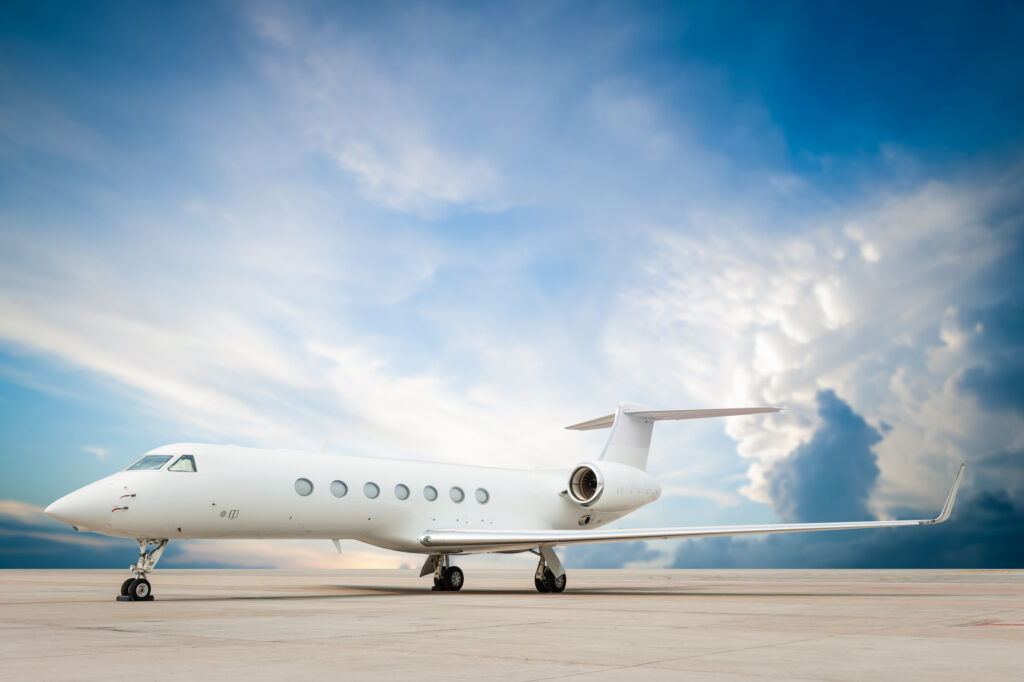Private jets tend to be small, agile aircraft, but are they any faster than a commercial airliner?
The average private jet isn’t faster than the average commercial airliner, but there isn’t much in it. However, at the top level, the fastest private jet outperforms the fastest commercial airliner. All-in-all, flying private is faster, even if the jets themselves aren’t.

Read on to learn more about the differences between flying private, and flying commercial.
The Jets Aren’t, But The Process Is
When it comes to flying private, there are more than just a few unique benefits. The most obvious benefit is the fact that you’re flying on a more exclusive level, often with a few select passengers who are typically friends, family, or colleagues.
However, there’s a lot of upgrades in the process department, as simply boarding the plane is made dramatically faster than the commercial process. The ‘door-to-door’ time is reduced massively when flying private.
You’ll often bypass security, check-in, and have much more leniency when it comes to ‘arriving early’. In many cases, you’ll be chauffeured onto the runway to board the plane directly, rather than filing in with hundreds of other passengers along corridors and walkways.
While a private jet is still subject to the taxiing queues on the ground, you’ve already saved a whole heap of time. However, the time-saving aspects don’t end there.
In the air, a private jet is subject to fewer regulations and strict requirements than commercial airliners are. They can amend their flight path at the drop of a hat, land at a wider range of airports, and fly in a much more tactical manner.
They tend to fly higher than commercial airliners – as much as twenty-thousand feet higher. This puts them above the harsh weather and often busy flight paths, meaning they circumnavigate any bigger aircraft that might be in their way.
Also, commercial airlines usually chart their course according to weather, and as a private jet is way above the weather, they don’t need to. They have the ability to fly as direct as possible, meaning that again, they’re considerably faster.
However, when it comes to the jets themselves, there isn’t much difference in the total speed. The average private jet won’t be faster than the average commercial airliner, but this fact changes at the highest level.
Shooting Through The Sky
At the top end of the spectrum, the fastest private jet is faster than the fastest commercial airliner. Bombardier builds and sells the Global 6500, a long-range, super-powered, and luxuriously equipped aircraft.
This plane has a maximum range of some 6600 miles, which is dramatically long for a private jet. It also flies at around 690 miles-per-hour, high above the weather, competing aircraft, and anything else that might slow it down.
However, the fastest commercial airliner isn’t too far behind. The Boeing 747-8i is a relatively new aircraft, having been put into production in around 2010.
It’s an enormous plane, but it’s very exclusive, and by 2020 it was only in service with three specific airlines. These were Korean Air, Air China, and Lufthansa.
When flying at top speed, the 747-8i is capable of reaching around 650 miles-per-hour, which puts it a little way behind the Bombardier Global 6500. However, you also need to remember that this airliner is subject to more restrictions and the overall journey time will be substantially longer.
The Exceptions
As private air travel becomes more popular in the modern age, so too does the innovation that drives it. There are more and more manufacturers and engineering companies looking to produce the next best thing, and that seems to be supersonic travel.
As of 2020, there were no supersonic private jets in production, but many organizations were working to change that fact. One example is the Aerion AS2, a supersonic business jet that would break records.
It was revealed in 2014 and partnered with Airbus, and then Lockheed Martin, with a total expected program cost of around four billion dollars. However, the end result would be a jet capable of reaching speeds of around twelve hundred miles-per-hour.
The only commercial airliner that has ever come close to that figure was Concorde. This dramatically unique and supersonic airliner was introduced in 1976 but sadly taken out of service in 2003.
At top speed, Concorde could fly at almost fourteen hundred miles-per-hour. Although, it was also incredibly hard to get a ticket, and even then you were paying thousands of dollars for the experience.
